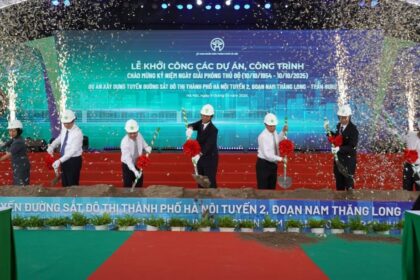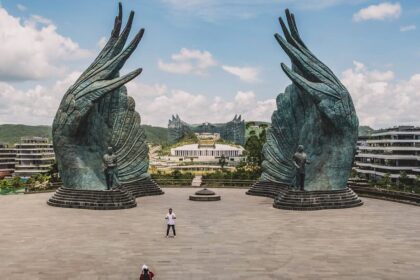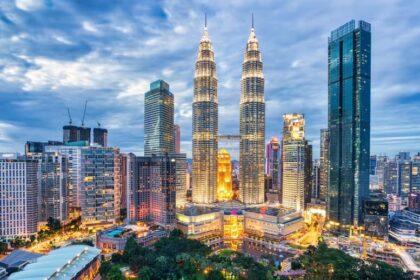Nan’s Old Town Shines: A Festival of Light and Culture
In the heart of northern Thailand, the historic city of Nan is undergoing a vibrant transformation. For two months, from June 6 to August 6, 2024, Nan’s old town is illuminated with dazzling light displays, traditional lanterns, and a host of cultural activities. This initiative, titled “Magical Charm of Nan City: A Living Old Town”, is more than a spectacle—it’s a strategic effort to revive Nan’s cultural charm, boost tourism, and foster sustainable heritage preservation.
- Nan’s Old Town Shines: A Festival of Light and Culture
- What Makes the Nan Light Festival Unique?
- Reviving Heritage: The Role of Community and Tradition
- Nan’s Rich History: From Independent Kingdom to Cultural Haven
- Festival Highlights: What to See and Do
- Beyond the Festival: Exploring Nan’s Cultural and Scenic Attractions
- Tourism, Economy, and Sustainable Development
- Challenges and Opportunities
- In Summary
Organized by the Nan Tourism and Sports Office, the festival is part of a broader campaign, “The Old City of Nan is Alive: Making a Cultural City to Heritage”. The event aims to engage local communities, inspire pride, and position Nan as a global cultural destination, even during the typically quieter monsoon season.
What Makes the Nan Light Festival Unique?
The festival’s centerpiece is its stunning array of lights and decorations. Landmarks such as the Nan City Wall, Kuang Mueang Nan Walking Street, Kuang Noi Mueang Nan Walking Street, Phakong Road, and Mahawong Road are adorned with traditional Lanna lanterns, known locally as Kom Pad. These lanterns, crafted in the distinctive style of the ancient Lanna Kingdom, are a symbol of northern Thai heritage.
Adding to the spectacle are larger lanterns depicting mythical creatures from the Himavanta forest—a legendary realm in Thai literature—and the 12 animals of the Chinese zodiac. The festival also features a mesmerizing light tunnel, a music festival, and a bustling cultural market. On Fridays and Saturdays during the first and third week of each month, visitors can enjoy traditional northern food, local crafts, and live performances, creating a lively atmosphere that bridges past and present.
Nan Deputy Governor Wilaiwan Budasa emphasizes the festival’s dual purpose:
“Nan is a province with a deep cultural identity, history, and local wisdom. This project is an important step in revitalising the old city while upgrading the quality of tourism.”
Her words reflect the broader vision: to not only attract tourists but also to strengthen the community’s connection to its heritage.
Reviving Heritage: The Role of Community and Tradition
At the heart of the festival is a commitment to sustainable heritage preservation. The use of Kom Pad lanterns and motifs from Thai mythology is more than decorative—it’s a celebration of Nan’s unique cultural identity. The Lanna Kingdom, which once included Nan, was renowned for its distinctive art, architecture, and spiritual traditions. By reviving these elements, the festival helps ensure that local customs and stories are passed down to future generations.
The festival also encourages active participation from local artisans, performers, and food vendors. This not only supports the local economy but also gives residents a sense of ownership and pride in their city’s transformation. The Nan Tourism and Sports Office notes that the event is designed to inspire local pride and attract both domestic and international tourists, especially during the monsoon season when visitor numbers typically decline.
Nan’s Rich History: From Independent Kingdom to Cultural Haven
To fully appreciate the significance of the festival, it’s important to understand Nan’s historical context. With a history spanning over 700 years, Nan was once an independent kingdom before becoming part of the Lanna Empire and, eventually, modern Thailand. This legacy is visible in the city’s architecture, temples, and traditions.
Nan is renowned for its Lanna-style temples, such as Wat Phumin, famous for its “Whispering Mural,” and Wat Ming Mueang, known as the White Temple. The city’s old walls, museums, and traditional wooden houses offer a glimpse into a bygone era. According to the Tourism Authority of Thailand, Nan’s unique blend of history, culture, and natural beauty makes it a standout destination for travelers seeking an authentic northern Thai experience.
Festival Highlights: What to See and Do
The “Magical Charm of Nan City” festival is designed to appeal to a wide range of visitors. Here are some of the key attractions and activities:
- Lantern Displays: Traditional Kom Pad lanterns and large-scale lanterns depicting mythical creatures and zodiac animals light up the city’s main streets and landmarks.
- Light Tunnel: A visually stunning tunnel of lights offers a unique photo opportunity and immersive experience.
- Cultural Market: Held on select Fridays and Saturdays, the market features traditional northern Thai food, local crafts, and live performances by musicians and dancers.
- Music Festival: Local and regional artists perform a variety of genres, adding to the festive atmosphere.
- Interactive Workshops: Visitors can participate in craft-making, lantern workshops, and traditional cooking demonstrations.
These activities not only entertain but also educate visitors about Nan’s cultural heritage and the skills of its artisans.
Beyond the Festival: Exploring Nan’s Cultural and Scenic Attractions
While the light festival is a major draw, Nan offers much more for travelers interested in culture, history, and nature. A typical itinerary might include:
- Temple Tours: Explore Wat Phumin, Wat Ming Mueang, and Wat Si Phan Ton, each with its own unique art and history.
- Nan National Museum: Learn about the region’s history, from its days as an independent kingdom to its integration into Thailand.
- Plumeria Tunnel: A picturesque walkway lined with fragrant plumeria trees, perfect for a leisurely stroll.
- Weekend Night Market: Sample local delicacies and shop for handmade crafts in a lively, communal setting.
- Countryside Excursions: Visit the salt ponds in Sapan, enjoy coffee at local cafes, and experience rural life in nearby villages like Pua and Doi Sakad.
Travelers can also enjoy farm-to-table dining, scenic drives through the mountains, and homestays that offer a deeper connection to local life. According to travel guides, Nan’s blend of cultural heritage, local flavors, and natural beauty makes it a hidden gem for those seeking an off-the-beaten-path adventure.
Tourism, Economy, and Sustainable Development
The Nan light festival is not just about attracting visitors—it’s part of a broader strategy to promote sustainable tourism and economic development. By focusing on cultural heritage and community involvement, the festival aims to create long-term benefits for residents and preserve Nan’s unique identity.
Local businesses, from food vendors to homestay operators, benefit from increased foot traffic and exposure. The festival also provides opportunities for young people to learn traditional crafts and performance arts, ensuring that these skills are not lost to modernization.
Officials hope that by positioning Nan as a cultural destination, the province can attract a new generation of travelers who value authenticity and sustainability. This approach aligns with global trends in tourism, where visitors increasingly seek meaningful experiences and connections with local communities.
Challenges and Opportunities
While the festival has been widely praised, it also faces challenges. Managing increased tourism while preserving the integrity of historic sites requires careful planning. There is also the need to balance commercial interests with the preservation of local traditions and the environment.
However, the collaborative approach taken by the Nan Tourism and Sports Office, local government, and community organizations offers a model for other regions seeking to revitalize their heritage. By involving residents in every stage of planning and execution, the festival fosters a sense of shared responsibility and pride.
In Summary
- Nan’s “Magical Charm of Nan City” festival illuminates the old town with traditional lanterns, light tunnels, and cultural activities from June 6 to August 6, 2024.
- The event aims to revive Nan’s cultural heritage, boost tourism, and engage local communities in sustainable preservation.
- Highlights include lantern displays, a light tunnel, cultural markets, music festivals, and interactive workshops.
- Nan’s rich history as a former kingdom and its Lanna-style architecture make it a unique destination for cultural tourism.
- The festival supports local businesses, artisans, and performers, contributing to the province’s economic and social development.
- Challenges remain in balancing tourism growth with heritage preservation, but Nan’s collaborative approach offers a promising model for sustainable cultural tourism.












